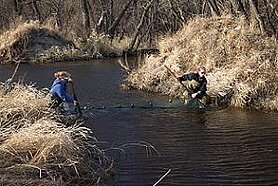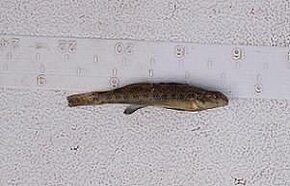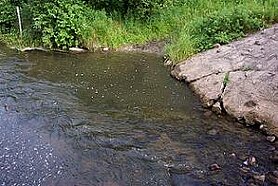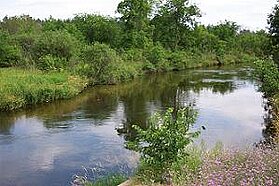Molecular Phylogeography of Etheostoma nigrum (Rafinesque) in the Upper Midwest

Ali Tackett (M.S. Student) interested in the use of molecular markers and their application in conservation ecology. My current project spans the fields of ecology and genetics. More specifically, I plan to employ microsatellite makers to examine the genetic relationships among Etheostoma nigrum (Johnny Dater) populations in the northern Midwest, specifically North Dakota and Minnesota.
Environmental and Conservation Sciences
Email: ali.tackett@ndsu.edu
Degrees: 2002 - B.S. Biology Albertson College of Idaho
Fellow: Ali Tackett, Environmental and Conservation Sciences Program
Department of Biological Sciences
Advisor: Dr. Craig Stockwell, Assistant Professor of Zoology, NDSU
Committee Members: Dr. Mark Clark, Dr. Gary Clambey, Dr. Allan Ashworth
Degree Progress: M.S. in ECS expected December 2006
Molecular Phylogeography of Etheostoma nigrum (Rafinesque) in the Upper Midwest
Objectives and Methods:
The geologic history and abundant potential study sites of the upper Midwest provide a unique opportunity for the assessment of spatial genetic diversity. The Johnny Darter, Etheostoma nigrum, with its large range and abundant populations, is an excellent species to study to answer phylogeographic questions about North Dakota and Minnesota. I am examining the genetic diversity of the Johnny Darter by optimizing PCR conditions for nine microsatellite primers created initially for congeners of E. nigrum. This information will provide not only the inferred gene flow among the darters but will also provide a baseline against which to evaluate gene flow for other fish species located in the same water bodies. For instance, many game fish are stocked and transferred within and among watersheds with little genetic monitoring. By studying a benthic fish with a small home range, it may be possible to uncover the phylogeographic structure among the various watersheds of the upper Midwest. In turn, this information can be used by managers for conserving genetic diversity within and among watersheds.
Project Progress:
During the spring and summer of 2005, 261 individuals were captured from the Upper Missouri River, Red River of the North, and Upper Mississippi River watersheds. DNA was extracted from fin clips taken from each fish. This DNA is currently being used with the optimized microsatellite makers to examine genetic diversity within and among the sampled populations. Immediate future plans include obtaining more individuals during the fall of 2005 and to continue the PCR fragment analysis work in the laboratory throughout the winter.
Significance of Research:
The genetic evaluation of E. nigrum populations may have management implications. Most of the fish populations in the upper Midwest have been isolated since the end of the Pleistocene. Managers often transfer and stock game fish from one water body to another with little to no regard for the genetic structure of the systems. This practice is occasionally based upon the idea that gene flow will occur in systems that are hydrologically connected; but in actuality, gene flow is largely influenced by the migratory habits of individual species. Species with small home ranges may have little gene flow between closely located populations. Over time, these populations develop a unique genetic identity, often adapting to local conditions. When fish transfers are planned without consideration of this diversity, populations become genetically homogenous. This results in a loss of genetic variation among populations and perhaps even outbreedig depression. This is especially important if populations are locally adapted. Understanding the current diversity and gene flow of E. nigrum in the watersheds of the upper Midwest will aide in the establishment of management and conservation units as well as help managers plan for the transfer and stocking of fishes. E. nigrum are particularly useful for evaluating phylogeographic structure because they are non-migratory and unlikely to be accidentally transferred due to their use of benthic habitats. The optimization of published primers for use on E. nigrum will provide an excellent opportunity for not only this study but for future molecular work on Johnny Darters throughout their range. This project will provide a baseline with which other species and populations may be compared. Once the genetic relationships among this species are better understood and the diversity is used to help managers and scientists in this area, the information could potentially be used to manage congeners throughout the range of Etheostoma nigrum.





Craig Stockwell
Biological Sciences
Office: Stevens 119
Telephone: 701-231-8449
Email: craig.stockwell@ndsu.edu


